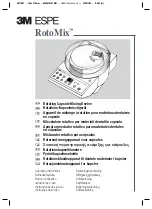
13
AVT-718 expects RXD to idle low and CTS to idle high. (All voltages measured with respect to
the communications isolated ground.) The user should be aware of potential communications
errors that may occur when using RS-232 at the higher data rates or in an electrically noisy
environment.
4.3 RS-422
When configured for RS-422, all communications between the AVT-718 Multiple Interface and
the host computer conform, at the physical interface, to EIA-RS-422 standard. Communications
between the interface unit and the host computer follow industry standard serial communications
protocol. There is one start bit, eight data bits (least significant bit first), no parity, and one stop
bit. Additionally, hardware handshaking using the RTS/CTS signal lines is implemented.
4.4 Vehicle Networks
All communications between the AVT-718 Interface and the external vehicle network were
designed to be in conformance with all relevant standards and specifications.
5. Communications
The structure and protocol of communications between the AVT-718 Multiple Interface and the
host computer are stated in the following sections.
5.1.1 Packet Construction
All communications between the AVT-718 and the host computer are accomplished in
“packets.”
Packets from the host computer to the AVT-718 are known as Commands.
Packets from the AVT-718 to the host computer are known as Responses.
All data is transferred in packets. The size of each data packet varies depending on the mode of
operation. For most modes the packet length is from 1 to 16 bytes (inclusive) but may be as
much as 260 bytes in KWP mode and much larger in VPW block transfer mode.
The first byte in each data packet is called the HEADER BYTE and is used to convey
information only between the control computer and the AVT-718 Multiple Interface.
The header byte is divided into the upper nibble and lower nibble. The upper nibble indicates
what information the data packet is conveying. The lower nibble is the count of the number of
bytes that follow the header byte. The meaning of the upper nibble of the header byte depends on
which direction the data packet is moving; whether to or from the control computer.
There are occasions where packets between the AVT-718 and the host computer are more than
15 bytes in length. To support these longer packets, two alternate forms have been developed.
Artisan Technology Group - Quality Instrumentation ... Guaranteed | (888) 88-SOURCE | www.artisantg.com















































